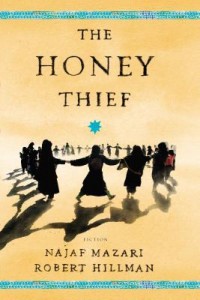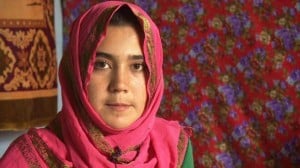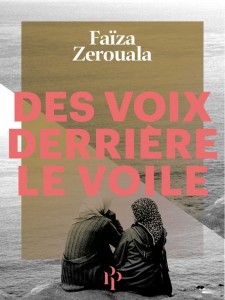“When I sleep, I dream like a Hazara” (The Honey Thief, p. 6).
The Honey Thief is a successful collaboration between authors Najaf Mazari and Robert Hillman, featuring a host of interesting characters and places from Mazari’s native Afghanistan. Winner of the 2005 Australian National Biography Award, Hillman came on board initially to co-author Mazari’s personal story in The Rug Maker of Mazar-e-Sharif. Their first collaboration together describes Mazari’s escape from imminent persecution at the hands of the Taliban and the journey that would take him to Woodmere Asylum Center in Australia and eventual freedom. The Honey Thief relays a captivating collection of stories which have their roots in the oral storytelling tradition that is still prevalent in parts of Afghanistan. On the whole, this book reads as an ode to the author’s Hazarajat (the land of the Hazara in Afghanistan) and to a way of life Mazari left behind and particularly to the fantastical stories he had grown up with as a child.
One of the first things that strikes you about The Honey Thief is Mazari’s obvious longing for Hazarajat and its people:
“The sight of my native land on the television set fascinated me, but I must confess that it doesn’t fill me with pride. . . No, because my loyalty is not to this land in the middle of the world, but to the small part of it in which my people, the Hazara, have toiled for their bread for eight hundred years.” (p. 2)
This “longing” and the intensity with which Hillman is able to convey Mazari’s reminiscing appears to supersede even the geographical boundaries that encompass the nation of the Hazara, i.e. Afghanistan. Although Hazaras can be found in Iran and Pakistan, the Hazarajat is a regional name for the territory inhabited by the Hazara people located in the central highlands of Afghanistan. Historically, this predominantly Shia ethnic group has suffered severe political, social and economic repression and now constitute approximately 9 percent of the Afghan population. The situation appears to have improved little for Afghan-Hazaras and even less so for its diaspora in Pakistan (settled mostly in Quetta, Balochistan) who are experiencing one of the worst incidences of violence against their communities.
“The history of the Hazaras are told in the fields, in our tents, in our houses.” (p. 4)
This book employs an interesting writing process that also pays homage to the oral tradition of storytelling in Afghanistan. Simply put, “Najaf talks and Robert fashions what he says into the sentences that become the stories.” What becomes apparent as you delve into this collection is the ease with which fictional elements of storytelling mesh with historical events. Part of the enjoyment for the reader will be figuring out what is real and what is obviously a superb handle on language to convey the tales of folklore and mythology of the region. Stories range from “The Honey Thief” (which gives the book its title), a coming of age story of a young, boy who becomes an apprentice bee-keeper, to the “The Music School” where the discovery of music sets the tone for a witty account of a mute boy who finds his calling amidst the musical notes of the tula.
Nothing, however, can quite prepare you for the chapter about a teenage boy who kills the reigning monarch. Scenes in “The Death of Abdul Khaliq” unfold slowly, like watching from behind a cloudy window pane, knowing fully well how events transpire but trusting the author(s) to carry you safely through the dark narrative. Much of this can be attributed to Hillman’s writing style which has the ability to turn even the most sordid of stories into something akin to magical. Also don’t be surprised when one story leads into another – it’s impressive how much restrain Hillman employs in fleshing out two different plots without confusing either. This is perhaps best exemplified in “The Music School” where the narrative shifts seamlessly between the story of the mute boy and his learning of a musical instrument to one about an old persian king, his wife and an attractive tula master.
The question Mazari asks himself as he’s revising each chapter is this: “If these words were now translated into Dari, would my family in Afghanistan nod their heads and say, ‘This is our country. This is true’?” In my view, this collaborative process actually gives new meaning to the phrase “lost in translation”! Overall however, Hillman’s soft, lyrical style perfectly compliments his co-author’s stories of love, courage and adventure that find inspiration in his country’s culture and history.
Women play largely supporting roles in this collection of stories – they are sisters, mothers, wives. They represent all-encompassing love. This is rare for a book set in Afghanistan, considering how much our exposure to this country is driven by coverage on terrorism and sectarian violence, coupled with the constant scrutiny on the status of women’s rights (and particularly how Islam impacts their lives). It is therefore not uncommon to have such images color our perceptions of a country and its people. Female characters in The Honey Thief do not come across as suppressed or fickle. “The Behsudi Dowry,” for instance, introduces us to Hameed, who is able to win over a scornful beauty by reading to her from The Adventures of Huckleberry Finn. My interpretation of the character of Nadia (Hameed’s scornful beauty), however, suggests she was not intentionally expressing disdain for her suitors but instead being selective about her husband-to-be – and really, why shouldn’t she? There’s nothing more attractive to a woman than a man who enjoys a good book!
Finally, one of my very favorite chapters has to do with one my favorite activities in the world: reading about food and the various styles of cooking. The tone used in the final chapters with the recipes and notes on growing food and eating sustainably had me smiling wide in parts – there’s humor to the writing that suggests the author(s) are probably quite comfortable in a kitchen setting. The recipes for lamb qorma and sabzi gosht are exceedingly similar to their counterparts in South Asia but others (like aash and kotfta nakhod) have definite Persian influences. I genuinely hope Mazari and Hillman try their hand at a cookbook down the line.
On the whole, the book is an enjoyable foray into a world often associated with war and deprivation. While the focus is on the culture of the Hazaras, it does not take away from the experience of embroiling oneself into a world far removed from one’s own. Each story is rich in detail and shifts easily between the more magical elements of storytelling and real life – the fun is in figuring out which is which.













